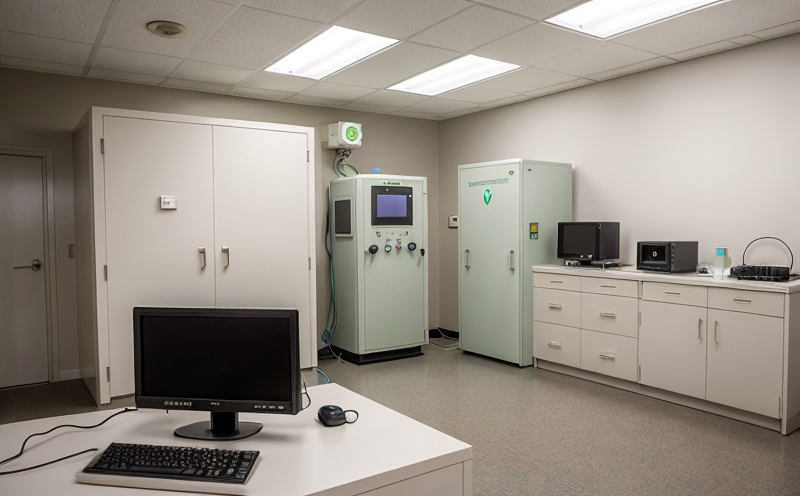ASTM E668 Calibration of Dosimeters Against Reference Fields
The ASTM E668 standard provides a method for calibrating dosimeters against reference fields. This service is essential in ensuring the accuracy and reliability of radiation measurements across various sectors, including healthcare, nuclear power plants, environmental monitoring, and research laboratories.
Calibration against reference fields ensures that dosimeters provide accurate readings under known conditions. The ASTM E668 process involves placing a dosimeter within a controlled radiation field where the dose rate is precisely defined. By comparing the dosimeter's reading to this known value, any discrepancies can be identified and corrected.
This service supports several key aspects of quality assurance in radiation monitoring:
- Ensures compliance with international standards and regulations
- Aids in the validation of dosimeter performance across different environments
- Facilitates accurate dose assessment for regulatory reporting purposes
- Supports research and development activities requiring precise radiation measurement
The ASTM E668 method is particularly useful in sectors where high levels of precision are required, such as nuclear medicine, environmental monitoring, and safety-critical operations. By adhering to this standard, laboratories can enhance their reputation for accuracy and reliability.
During the calibration process, dosimeters are exposed to a reference radiation field generated by a carefully controlled source. The dose rate within this field is measured using a primary standard or a secondary standard that has been previously calibrated against a primary standard. This ensures that the reference field accurately represents known doses.
The dosimeter is then placed in this field for a specified period, and its reading is recorded. The difference between the dosimeter's reading and the known dose rate of the reference field indicates any potential calibration errors or instrument drift. Corrections can be made based on these findings to ensure accuracy.
| Step | Action | Outcome |
|---|---|---|
| Dose Rate Definition | Define the dose rate of the reference field. | Establish a known standard for comparison. |
| Placement and Exposure | Place dosimeter in the controlled radiation field and expose it to the defined dose rate. | Obtain a reading from the dosimeter under specified conditions. |
| Data Comparison | Compare the dosimeter's reading with the known dose rate of the reference field. | Determine accuracy and identify any necessary corrections. |
| Correction and Validation | Apply any necessary corrections to the dosimeter, then validate its performance against other standards. | Ensure ongoing reliability and compliance with international standards. |
Benefits
The benefits of ASTM E668 calibration include:
- Enhanced Accuracy: Ensures that dosimeters provide accurate readings under known conditions.
- Improved Compliance: Meets international standards and regulatory requirements.
- Precision: Provides precise dose assessments for various applications, including medical treatments, environmental monitoring, and research.
Customer Impact and Satisfaction
By offering ASTM E668 calibration services, our laboratory enhances the reliability of radiation dosimetry across various sectors. This service directly impacts customers by:
- Maintaining regulatory compliance with international standards.
- Ensuring accurate dose measurements for critical applications.
- Reducing the risk of errors and inaccuracies in dose assessment.
This, in turn, leads to increased customer satisfaction and trust. Our commitment to accuracy and reliability is reflected in the quality of our calibration services, which are essential for maintaining safety and regulatory compliance.
Use Cases and Application Examples
- Nuclear Power Plants: Ensuring accurate dose monitoring to protect workers and the environment during reactor operations.
- Hospitals: Providing precise radiation dosimetry for medical treatments, such as cancer therapy.
- Environmental Monitoring: Accurate measurement of environmental radiation levels to assess compliance with regulatory limits.
The ASTM E668 calibration method is used in various applications, including:
- Dose assessment for personnel exposed to ionizing radiation
- Verification of dosimeter performance under different environmental conditions
- Research and development activities requiring precise dose measurements
| Sector | Application |
|---|---|
| Nuclear Power Plants | Monitoring radiation levels to ensure worker safety |
| Hospitals | Precision dosimetry for medical treatments |
| Environmental Monitoring | Evaluation of environmental radiation levels |





